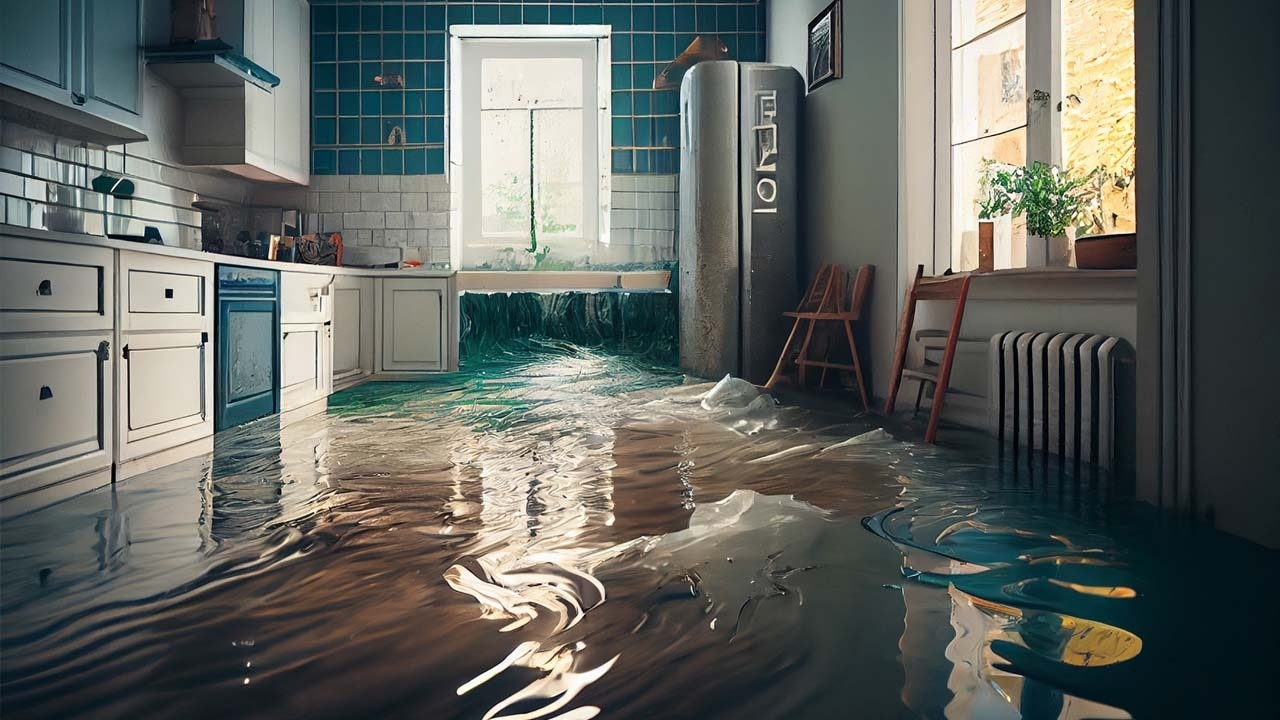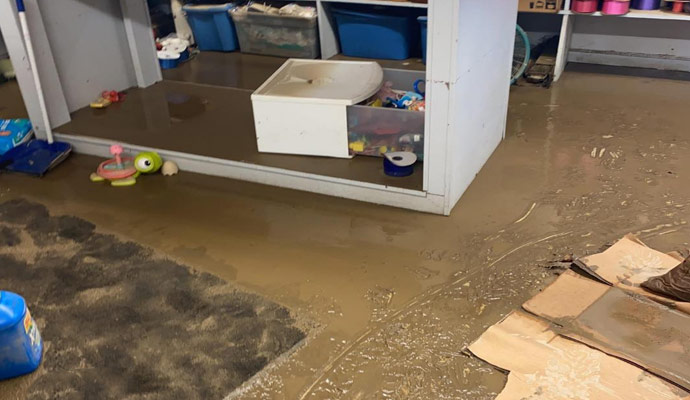Emergency Water Damages Repair: Swift Feedback to Reduce Additional Damages
Water damages can strike unexpectedly and leave destructive impacts on homes and organizations. When confronted with such a situation, a swift reaction is important to lessen more damages and protect against possible wellness hazards. But just what does emergency water damage remediation involve? In this conversation, we will certainly dig right into the significance of instant activity, the evaluation process, the actions associated with water removal and drying out, mold prevention and removal, and eventually, the reconstruction of the affected area. By understanding the urgency and comprehensive nature of this procedure, you will certainly obtain useful insights into how professionals tackle emergency water damages, making certain a swift and reliable feedback.
Value of Swift Reaction
Swift action is of utmost value in water damage restoration to decrease further damages and minimize potential risks. The longer water rests in a building, the even more damage it can create.
Among the main factors swift reaction is essential in water damage repair is to avoid the development of mold and mildew. Mold can start to expand within 24 to 2 days of water direct exposure, and when it holds, it can spread swiftly throughout the damaged location. Mold not just creates further damages to the structure of the building yet also presents wellness risks to residents. By reacting quickly, specialists can thoroughly dry the area and inhibit the development of mold, lessening the demand for considerable remediation and ensuring the safety of those entailed.
Water damage can be devastating, especially when it influences individual products of emotional or monetary worth. Acting swiftly allows specialists to analyze the damages and carry out proper repair strategies to recover as much as feasible.
Examining the Extent of Damages

Throughout the evaluation, remediation professionals thoroughly examine the damaged location to recognize noticeable indications of damages, such as water spots, deformed products, and mold and mildew growth. They likewise utilize specific equipment to spot surprise damages, such as dampness meters and thermal imaging electronic cameras. This extensive assessment allows them to precisely establish the extent of the damage and establish a tailored reconstruction strategy.
Since it helps specialists prioritize their initiatives,Evaluating the level of water damages is important. They can identify locations that need immediate interest, such as standing water removal and drying out, to avoid additional damage and minimize the danger of mold growth. They can also establish the locations that need repair work or replacement, making sure that no damage goes unnoticed or unattended.

Water Extraction and Drying Refine
The water removal and drying procedure is a vital action in water damage restoration, as it entails the elimination of excess water and the detailed drying out of the afflicted area to avoid further damage and mitigate the threat of mold development. After analyzing the degree of the water damages, the next step is to remove the water from the damaged location. This is normally done utilizing customized devices such as pumps, vacuums, and dehumidifiers. These devices are designed to efficiently and effectively get rid of water from various surface areas, consisting of rugs, wall surfaces, and floors.
This action is important in avoiding secondary damages, such as architectural damage and the development of mold and mildew and mold. The drying process might take numerous days, depending on the degree of the water damages and the materials included.
It is necessary to ensure that the afflicted area is totally dry before waging any kind of repairs or restoration. Failing to completely dry out the area can cause long-term problems, consisting of damaged frameworks, stuffy smells, and the development of mold and mildew and mold. Professional water damages reconstruction business utilize moisture discovery devices to ensure that the damaged location is completely dry before continuing to the next action.
Mold Avoidance and Remediation
Effective mold avoidance and removal are essential in water damages remediation to guarantee the safety and security and stability of the affected location. leak detection philadelphia. When water damage takes place, whether from a burst pipe, flooding, or a leaky roof, it develops an excellent atmosphere for mold growth. Mold can start to create within 24 to 48 hours after water damages, and if left untreated, it can spread swiftly and cause major wellness risks
To stop mold growth, it is necessary to deal with water damages without delay. The first step is to fix the source and recognize of the water invasion. When the resource is fixed, the afflicted area ought to be completely dried to avoid moisture from sticking around. This might involve making use of dehumidifiers, air movers, and other specific tools to eliminate excess wetness from the air and surface areas.
In situations where mold and mildew growth has already occurred, remediation is necessary to eliminate the mold and mildew and stop its return. This entails the cautious elimination and disposal of damaged products, such as drywall or rug, to make sure that all traces of mold are eliminated. It is necessary to note that mold removal must be performed by experts who have the necessary training and tools to securely manage and eliminate mold and mildew.
Recovering the Affected Location

First of all, it is important to thoroughly dry out the area to stop any kind of more damage and to inhibit the development of mold and mildew. This might entail the use of specialized drying devices, such as dehumidifiers and industrial-grade fans, to get rid of all wetness from the damaged surface areas.
As soon as the location is entirely dry, the restoration process can start. This might entail replacing or repairing damaged structural aspects, such as floor covering, ceiling, or drywall ceramic tiles. It is necessary to attend to any kind of underlying linked here concerns that might have caused the water damage, such as leaking pipelines or damaged pipes, to avoid future occurrences.
Furthermore, recovering the damaged location might additionally consist of painting wall surfaces, changing harmed components, and extensively cleaning and sanitizing the space. This ensures that not only is the area structurally sound, but it is also cosmetically pleasing and secure for occupancy.
Final Thought
To conclude, quick reaction is critical in minimizing more damages triggered by water emergencies. Evaluating the degree of damages enables effective water extraction and drying procedures to be executed. Furthermore, mold and mildew avoidance and removal are necessary in bring back the affected location. In general, timely activity and detailed repair measures are crucial to mitigating the unfavorable effects of water damages.
Swift action is of utmost relevance in water damages reconstruction to reduce additional damages and reduce possible risks.During the analysis, restoration experts extensively check out the affected area to identify visible indicators of damages, such as water stains, distorted products, and mold and mildew growth.The water extraction and drying procedure is an essential step in water damages reconstruction, company website as it involves the removal of excess water and the complete drying of the damaged location to avoid additional damages and minimize the threat of mold development. After assessing the extent of the water damages, the following action is to remove the water from the damaged location.Reliable mold and mildew avoidance and removal are crucial in water damage restoration to make sure the safety and security and stability of the afflicted location.